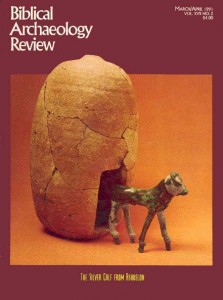
You may have seen the exciting newspaper headlines last summer: “‘Golden Calf’ Found in Ashkelon,” they declared. The quotation marks around the first two words were prudent—the object was actually of silver-covered bronze—but the allusion to the Golden Calf worshiped by the Israelites in Exodus 32 was apt: The newly discovered cult figurine was as highly regarded in ancient Canaanite religion as it was later vilified by the Israelite faith. But this stunning find, important as it is, should not draw our attention away from the myriad other discoveries now being made at Ashkelon. This 5,500-year-old city along the Mediterranean coast, often mentioned in the Bible, has been home to Canaanite, Philistine, Phoenician, Roman, Byzantine and Islamic cultures. Lawrence E. Stager reviews the city’s history during the first two of those periods in “When Canaanites and Philistines Ruled Ashkelon,” and marshals an impressive array of evidence—ranging from lowly loomweights to Homeric epics—to answer the longstanding question of where the Sea Peoples (of whom the Philistines were one) came from. The answer belies the dictionary definition of “philistine.” Of course, 5,500 years of history is a little too much even for BAR to attempt in one sitting, so the second part of Stager’s article—covering Ashkelon from the Phoenician period to medieval times—will appear in our next issue.
Already a library member? Log in here.
Institution user? Log in with your IP address.

